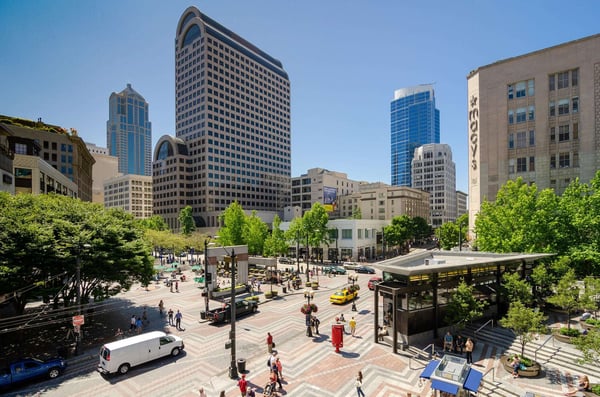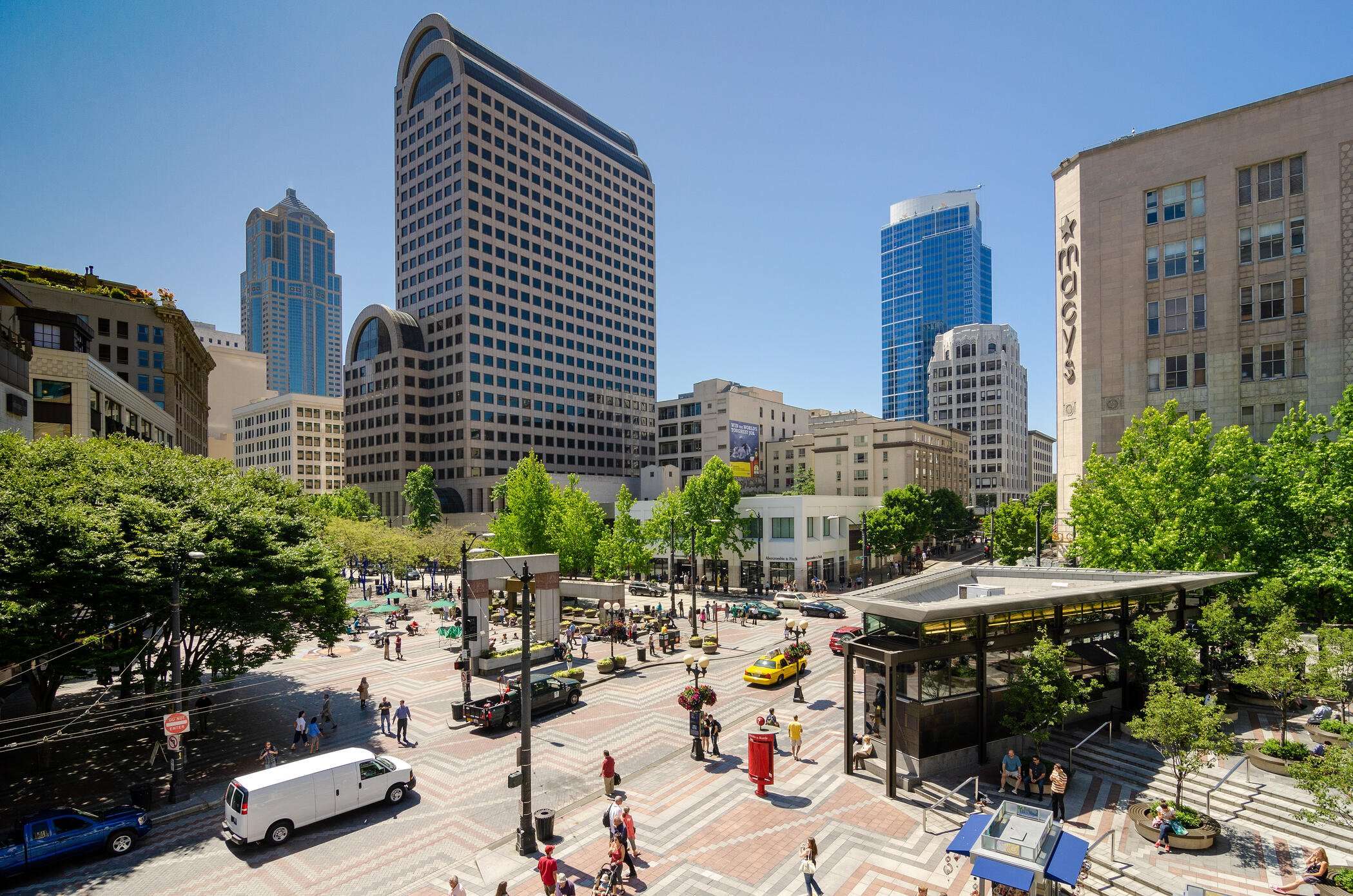Insurance underwriters use loss costs every day to help them price policies and understand risk. This familiar tool and its key input, a commercial property inspection, offer a wealth of information, and we want to help you get the most value possible from both. Today, we explore how a WSRB loss cost is developed and how you can use it, along with a Commercial Property Report (CPR), to make better decisions and serve your customers.
What is a loss cost?
In insurance in general, a loss cost, sometimes also called pure premium or pure cost, is what an insurer pays to cover claims, including claims settlement costs.1 WSRB produces advisory loss costs for commercial properties in Washington state, with a special focus on fire risk.
Our method for developing WSRB loss costs is approved by the state Office of the Insurance Commissioner (OIC), and our advisory loss costs estimate expected losses. The idea is that, if insurance companies all charged exactly what our loss costs advised, their premiums would exactly cover property losses and claims administration over the long term.
Insurance companies need to cover more than just the costs of claims and settlement costs, though. That’s where a loss cost multiplier comes in; the multiplier factors in other costs — such as paying underwriters, agents, and taxes — and the company’s profit. As the multiplier’s name suggests, insurance companies multiply it by the loss cost, whether the loss cost comes from WSRB or another rating bureau, to set rates.
 When you're underwriting commercial buildings, a WSRB loss cost helps you understand not only the structure itself but also the businesses operating there and the risks they present.
When you're underwriting commercial buildings, a WSRB loss cost helps you understand not only the structure itself but also the businesses operating there and the risks they present.
Related:
What are Loss Costs and Loss Cost Multipliers?
How are WSRB Loss Costs developed?
We produce loss costs for specifically rated buildings, and we produce protection class data you’ll need to determine the loss cost for a class-rated building. To determine whether a property can be class rated or requires an inspection, refer to Rule 85.
The first step to developing a WSRB Loss Cost for a specifically rated building is a commercial property inspection. After you request an inspection, one of our commercial property analysts visits the property and looks at:
- The construction of the building, including the construction classification, building age, and earthquake classification.
- The businesses operating in the building: what they do and what hazards they present.
- Risk mitigation efforts.
- The fire sprinkler system and installation and test documentation.
The analyst also measures the building's square footage, creates a building diagram, and takes photos of the building itself as well as adjacent buildings so you can see potential exposures. That information, along with a variety of other data, which we’ll explore below, is included in the Commercial Property Report.
The data is also put through the WSRB General Basic Schedule (GBS), which translates the analyst’s findings into loss costs for the building, general contents, and contents for each occupancy type description. The GBS uses engineering principles, building code principles, and fire protection principles to make that translation by adding a cost, or charge, for each deviation from an “ideal,” low-risk building.
Imagine a one-room, concrete building with a metal desk, where one person works. There is no stove or other device or operation that could start a fire, and there are no other buildings nearby except for a fully equipped fire station. There is a fire hydrant right outside the building entrance. If one of our analysts ever inspected such a building, its GBS charges would likely be zero. The farther a real building gets from this fictionalized ideal, the greater the charges the GBS indicates are necessary to develop an accurate loss cost.
So, a building with a woodworking workshop — think sparks and combustible materials in close proximity — would have higher charges than one with a small coffee shop that doesn’t serve hot food. Those higher charges would add up to a higher loss cost to reflect the higher likely claims costs.
We published the first GBS in 1929 and have revised it regularly since then to account for updates in firefighting technology and construction practices. The GBS references several recognized standards, including those from the National Fire Protection Association (NFPA) and Underwriters Laboratories (UL).
 Some manufacturing operations create sparks and other fire risks.
Some manufacturing operations create sparks and other fire risks.
Before you insure a property, review the WSRB commercial property
report to find out about risks and risk-mitigation efforts.
Related:
Inside a WSRB Property Inspection
How does a loss cost help me?
A WSRB Loss Cost and Commercial Property Report can help you make more-informed underwriting decisions and better serve your customers.
- You can easily validate that the property and the businesses operating there match your expectations based on the application.
- You gain information you won’t get from the application, particularly data on adjacent exposures and the construction classification.
- You can quickly see what risk-mitigation efforts the property owner or business operator has taken — or not taken. If a restaurant doesn’t have a UL 300 fire suppression system, you’ll know. If there’s poor housekeeping in a workshop with flammable materials, you’ll know.
- You can identify ways to make Individual Risk Premium Modifications to more precisely price a risk or potentially offer a customer a discount.
- You can use the earthquake classification as an input for underwriting an earthquake policy.
Another key benefit of a WSRB loss cost is reassurance.
Our commercial property analysts are all highly trained and have years of experience. Each one has seen thousands of unique buildings and, as a result, developed a refined sense of what to look for in a building that relates to property and fire risk. Most analysts are also certified as a Fire Inspector I by the International Code Council, and some have gone a step further and achieved the Fire Inspector II certification.
Every year, we check whether our loss costs remain accurate. We review data on losses and premiums over the previous five years for the state, by occupancy rating group. We also look at data on construction costs and other factors that affect the size of a claim. Looking at trends and projecting into the future, we then adjust the factors used to calculate the loss costs to ensure these loss costs will be accurate and cover future losses.
Our next WSRB blog post will go into more depth about this updating process and cover some frequently asked questions about loss Costs, including the role of sprinkler credit.
Until then, explore our guide to commercial property risk assessment. Or, if you’re ready to order an inspection, log in and submit a request. Commercial property inspections are included in your WSRB subscription; there’s no additional charge for an inspection. After you order an inspection, send the agent or building owner a link to our guide to the inspection process. The information will help the building occupants prepare for an inspection and ensure you get the most comprehensive information possible.
[1] Investopedia, https://www.investopedia.com/terms/l/loss-cost.asp








